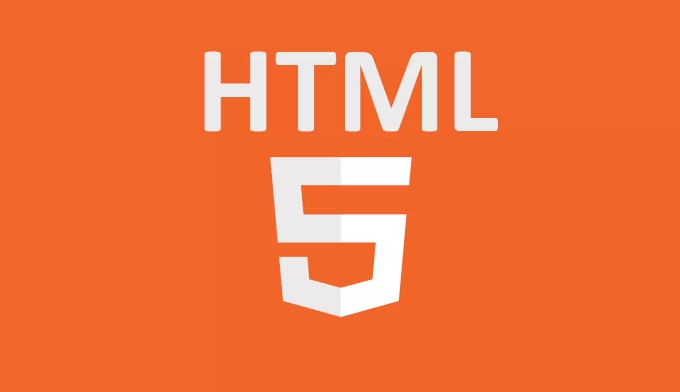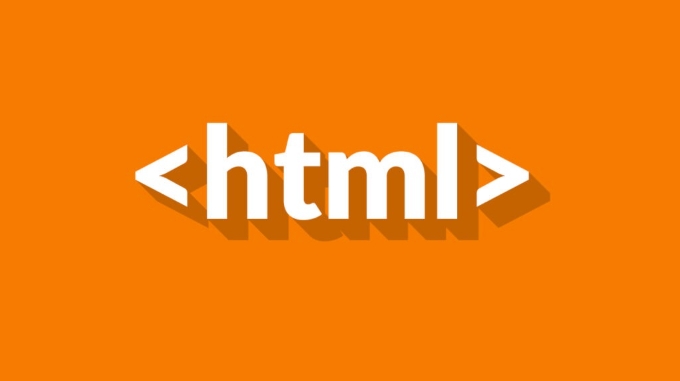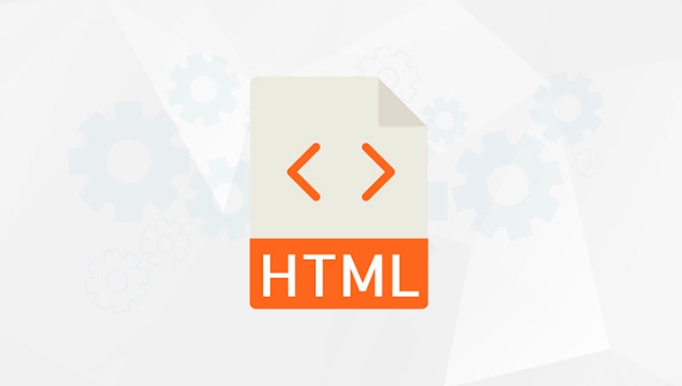How to use the srcset and sizes attributes for responsive images?
Jul 09, 2025 am 01:36 AMsrcset and sizes are key properties used in HTML for responsive images. 1. srcset provides multiple image versions for the browser to choose, such as pictures of different widths or pixel density; 2. sizes tell the browser the display width of the picture under different screen conditions, helping the browser to select the most suitable image resource based on the viewport size and device pixel ratio; 3. When using it, you should prepare multiple size images, clearly named, test device behavior, pay attention to performance trade-offs, and retain fallback's src images to ensure compatibility and default display effects.

In responsive web design, srcset and sizes are two very useful HTML attributes. They help browsers select the most appropriate image resources based on device characteristics, thereby improving loading speed and display effects. Simply put, if you use these two attributes correctly, the pictures can automatically adapt to different screen sizes, which is both clear and efficient.

What is srcset?
The purpose of srcset is to tell the browser what optional image resources are available. You can provide multiple resolution versions for a picture and label their width or pixel density.
For example:

<img src="/static/imghw/default1.png" data-src="image.jpg" class="lazy"
srcset="image-320w.jpg 320w,
image-480w.jpg 480w,
image-800w.jpg 800w"
alt="Example Picture">In the example above:
- Each file is followed by its width (indicated by w)
- The browser will select the most suitable image based on the current viewport size, device pixel ratio and other information.
You can also use x to represent pixel density, for example:

srcset="image-hd.jpg 2x, image.jpg 1x"
Suitable for switching clearer pictures when high-resolution screens such as Retina.
The meaning of the sizes attribute
sizes tells the browser: under certain conditions, how wide the image will be. This helps the browser decide which image resource to choose from srcset .
For example:
<img src="/static/imghw/default1.png" data-src="image.jpg" class="lazy"
srcset="image-320w.jpg 320w,
image-480w.jpg 480w,
image-800w.jpg 800w"
sizes="(max-width: 600px) 100vw,
800px"
alt="responsive picture">This code means:
- When the screen width is less than or equal to 600px, the image will occupy the entire viewport width (100vw)
- Otherwise, the image width is fixed to 800px
Combining the multiple width options provided by srcset , the browser can determine which image should be loaded.
Note:
sizesis only valid ifsrcsetcontains the width descriptor (w).
Suggestions in actual use
If you plan to use srcset and sizes , here are a few practical suggestions:
- Prepare images of multiple sizes : Don't just upload one large image and zoom in on the browser. Generate several versions of common widths in advance, such as 320px, 768px, 1024px, etc.
- Keep the naming clear : for example,
image-320w.jpgandimage-800w.jpg, so that errors are not prone to when writingsrcset. - Test behavior under different devices : You can use browser developer tools to simulate different screen sizes and observe whether the correct picture is loaded.
- Pay attention to performance trade-offs : Although multi-picture versions are flexible, you should also avoid providing too many unnecessary images to avoid increasing maintenance costs and server burden.
Don't forget fallback
Don't forget that src attribute is still important. It is both an alternative to old browsers and a default option when other conditions are not met. Make sure your src pictures are clear enough to handle most situations.
Basically that's it. Mastering srcset and sizes , you can make web pictures more smarter to adapt to various devices, rather than just loading large or blurry pictures.
The above is the detailed content of How to use the srcset and sizes attributes for responsive images?. For more information, please follow other related articles on the PHP Chinese website!

Hot AI Tools

Undress AI Tool
Undress images for free

Undresser.AI Undress
AI-powered app for creating realistic nude photos

AI Clothes Remover
Online AI tool for removing clothes from photos.

Clothoff.io
AI clothes remover

Video Face Swap
Swap faces in any video effortlessly with our completely free AI face swap tool!

Hot Article

Hot Tools

Notepad++7.3.1
Easy-to-use and free code editor

SublimeText3 Chinese version
Chinese version, very easy to use

Zend Studio 13.0.1
Powerful PHP integrated development environment

Dreamweaver CS6
Visual web development tools

SublimeText3 Mac version
God-level code editing software (SublimeText3)

Hot Topics
 Explain the purpose of the role attribute in ARIA.
Jun 14, 2025 am 12:35 AM
Explain the purpose of the role attribute in ARIA.
Jun 14, 2025 am 12:35 AM
ARIA's role attribute is used to define the role of web elements and improve accessibility. 1. Role attribute helps assistive technology to understand the functions of elements, such as buttons, navigation, etc. 2. Use role attributes to assign specific roles to non-semantic HTML elements. 3. The role attribute should be consistent with the element behavior and be verified by the accessibility tool test.
 HTML and Design: Creating the Visual Layout of Websites
Jun 14, 2025 am 12:39 AM
HTML and Design: Creating the Visual Layout of Websites
Jun 14, 2025 am 12:39 AM
How to create a website layout? 1. Use HTML tags to define the content structure, such as, ,. 2. Control styles and positions through CSS, using box model, float or Flexbox layout. 3. Optimize performance, reduce HTTP requests, use cache and optimize images, and ensure responsive design.
 How can you ensure your HTML code is readable and maintainable?
Jun 10, 2025 am 12:06 AM
How can you ensure your HTML code is readable and maintainable?
Jun 10, 2025 am 12:06 AM
Improve the readability and maintainability of HTML code can be achieved through the following steps: 1. Use semantic tags, such as, etc. to make the code structure clear and improve SEO effect; 2. Keep the code formatted and use consistent indentation and spaces; 3. Add appropriate comments to explain the code intention; 4. Avoid excessive nesting and simplify the structure; 5. Use external style sheets and scripts to keep the HTML concise.
 How do I stay up-to-date with the latest HTML standards and best practices?
Jun 20, 2025 am 08:33 AM
How do I stay up-to-date with the latest HTML standards and best practices?
Jun 20, 2025 am 08:33 AM
The key to keep up with HTML standards and best practices is to do it intentionally rather than follow it blindly. First, follow the summary or update logs of official sources such as WHATWG and W3C, understand new tags (such as) and attributes, and use them as references to solve difficult problems; second, subscribe to trusted web development newsletters and blogs, spend 10-15 minutes a week to browse updates, focus on actual use cases rather than just collecting articles; second, use developer tools and linters such as HTMLHint to optimize the code structure through instant feedback; finally, interact with the developer community, share experiences and learn other people's practical skills, so as to continuously improve HTML skills.
 How do I use the element to represent the main content of a document?
Jun 19, 2025 pm 11:09 PM
How do I use the element to represent the main content of a document?
Jun 19, 2025 pm 11:09 PM
The reason for using tags is to improve the semantic structure and accessibility of web pages, make it easier for screen readers and search engines to understand page content, and allow users to quickly jump to core content. Here are the key points: 1. Each page should contain only one element; 2. It should not include content that is repeated across pages (such as sidebars or footers); 3. It can be used in conjunction with ARIA properties to enhance accessibility. Usually located after and before, it is used to wrap unique page content, such as articles, forms or product details, and should be avoided in, or in; to improve accessibility, aria-labeledby or aria-label can be used to clearly identify parts.
 How do I create a basic HTML document?
Jun 19, 2025 pm 11:01 PM
How do I create a basic HTML document?
Jun 19, 2025 pm 11:01 PM
To create a basic HTML document, you first need to understand its basic structure and write code in a standard format. 1. Use the declaration document type at the beginning; 2. Use the tag to wrap the entire content; 3. Include and two main parts in it, which are used to store metadata such as titles, style sheet links, etc., and include user-visible content such as titles, paragraphs, pictures and links; 4. Save the file in .html format and open the viewing effect in the browser; 5. Then you can gradually add more elements to enrich the page content. Follow these steps to quickly build a basic web page.
 How do I create checkboxes in HTML using the element?
Jun 19, 2025 pm 11:41 PM
How do I create checkboxes in HTML using the element?
Jun 19, 2025 pm 11:41 PM
To create an HTML checkbox, use the type attribute to set the element of the checkbox. 1. The basic structure includes id, name and label tags to ensure that clicking text can switch options; 2. Multiple related check boxes should use the same name but different values, and wrap them with fieldset to improve accessibility; 3. Hide native controls when customizing styles and use CSS to design alternative elements while maintaining the complete functions; 4. Ensure availability, pair labels, support keyboard navigation, and avoid relying on only visual prompts. The above steps can help developers correctly implement checkbox components that have both functional and aesthetics.
 What is an HTML tag?
Jun 13, 2025 am 12:36 AM
What is an HTML tag?
Jun 13, 2025 am 12:36 AM
HTMLtagsareessentialforstructuringwebpages.Theydefinecontentandlayoutusinganglebrackets,ofteninpairslikeand,withsomebeingself-closinglike.HTMLtagsarecrucialforcreatingstructured,accessible,andSEO-friendlywebpages.






